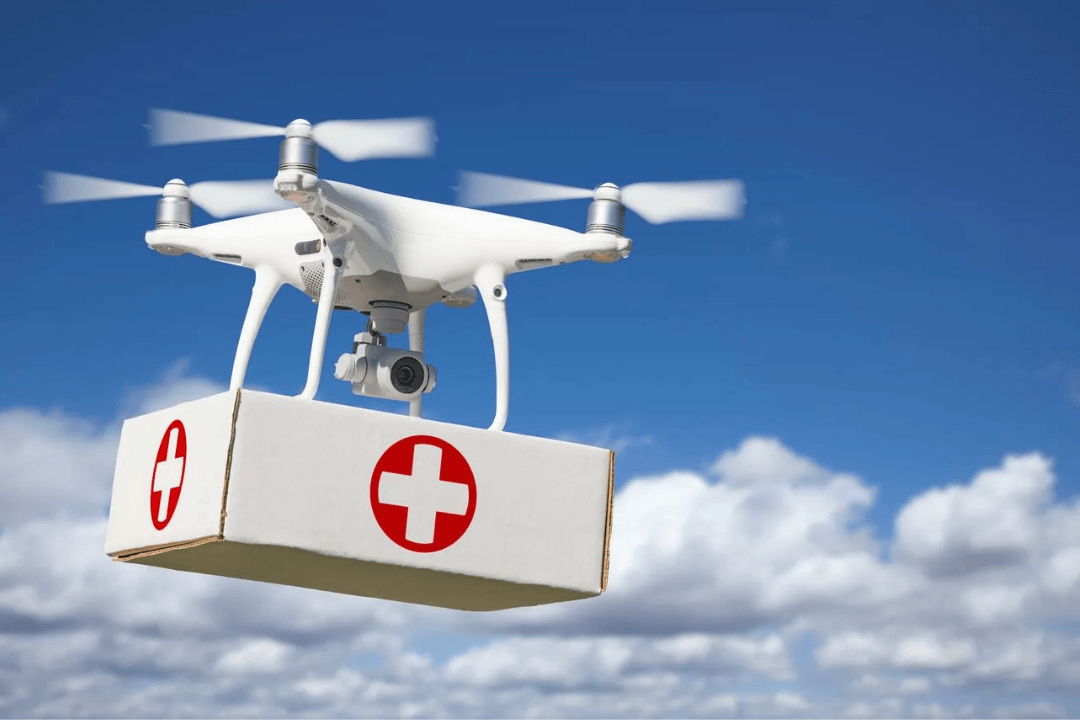Drone Technology for Safe Blood Delivery is emerging as a revolutionary advancement in the field of emergency healthcare logistics. In a country like India, where geographical diversity often limits the reach of timely medical intervention, drones are now proving to be a lifeline. A recent study conducted by the Indian Council of Medical Research (ICMR) highlights how drone technology can transform the transportation of blood and its components, ensuring timely deliveries in critical situations.
Importance of Drone Delivery in Healthcare
Timely access to blood, especially in trauma cases, maternal emergencies, or surgeries, can mean the difference between life and death. Traditional transportation methods—primarily road-based—face significant delays due to traffic congestion, rural inaccessibility, or natural disasters. Drone Technology for Safe Blood Delivery aims to eliminate these hurdles by offering a fast, efficient, and responsive system.
ICMR’s findings show that drones can reduce blood delivery times drastically, ensuring that even patients in remote or disaster-hit areas receive the necessary blood components within minutes rather than hours. In fact, drones are capable of bypassing terrain challenges, roadblocks, and infrastructural limitations, providing a game-changing tool for the healthcare sector.
Challenges in Blood Transportation
Blood is a highly sensitive biological product that requires controlled conditions during transport. It must be kept at precise temperatures—usually between 2°C to 6°C—to prevent degradation. Exposure to unsuitable temperatures can lead to haemolysis, a condition where red blood cells rupture, thereby compromising the safety and efficacy of the transfusion.
Moreover, components such as plasma and platelets are equally fragile and susceptible to temperature and environmental variations. Therefore, Drone Technology for Safe Blood Delivery must prioritize cold chain integrity and strict adherence to regulatory standards throughout the delivery process.
Maintaining Cold Chain Integrity
The key to successful drone-based delivery lies in preserving the cold chain—a temperature-controlled supply chain essential for the storage and transportation of blood. The ICMR study outlines the importance of adhering to both national and international guidelines for blood handling, ensuring that drones are equipped with advanced thermal protection containers.
These containers include GPS-enabled monitoring systems, temperature sensors, and real-time communication links to healthcare facilities. By integrating these features, drones can offer not just speed, but also reliability in the quality of blood delivered.
Comparative Efficiency: Drones vs. Road Transport
In ICMR’s study, drones delivered blood across 36 kilometres in just eight minutes. In contrast, traditional road transport covered the same distance in about 55 minutes. This stark contrast underlines the efficiency of drone technology, especially in life-threatening emergencies where every second counts.
The rapid delivery time makes drones ideal for transporting blood during natural disasters, remote surgeries, or rural medical camps. It also reduces dependence on costly infrastructure like ambulances or helicopters, providing a more scalable and affordable solution for blood banks and hospitals.
Environmental Factors and Operational Limitations
India’s diverse topography and weather conditions present unique challenges. High altitudes, monsoon rains, and extreme temperatures can affect drone navigation and the stability of internal environments. To address this, Drone Technology for Safe Blood Delivery must incorporate robust designs that can withstand turbulent weather and temperature fluctuations.
Further, drone operators must be trained in medical-grade logistics and emergency protocols. Regulatory frameworks must also evolve to accommodate drone flight paths, landing zones, and real-time tracking for medical deliveries.
Global Adoption and Learnings
Countries like Rwanda and Italy have already demonstrated the feasibility of drone-based blood delivery. Rwanda, in particular, has created a centralised drone delivery model that has successfully completed thousands of flights to rural hospitals. These international case studies reinforce the reliability and scalability of this technology.
India can leverage these global learnings to fast-track its own implementation of Drone Technology for Safe Blood Delivery, especially in states with difficult terrain like Himachal Pradesh, Jammu & Kashmir, and the North-East.
Future Directions and Policy Support
While early trials are promising, more comprehensive studies are needed to assess the impact of drone flights on blood quality, regulatory logistics, and public-private partnerships. The integration of AI, blockchain, and real-time analytics can further optimize drone routes and ensure safe deliveries.
The Ministry of Health and Family Welfare, along with the Directorate General of Civil Aviation (DGCA), will play a key role in scaling this initiative. Their support in crafting policies, granting permissions, and funding pilot projects is essential for nationwide deployment.
Conclusion
Drone Technology for Safe Blood Delivery holds immense potential to revolutionise emergency healthcare in India. As technology continues to evolve, the synergy between medical logistics and drone innovation can create a robust, responsive, and life-saving infrastructure for the future.




